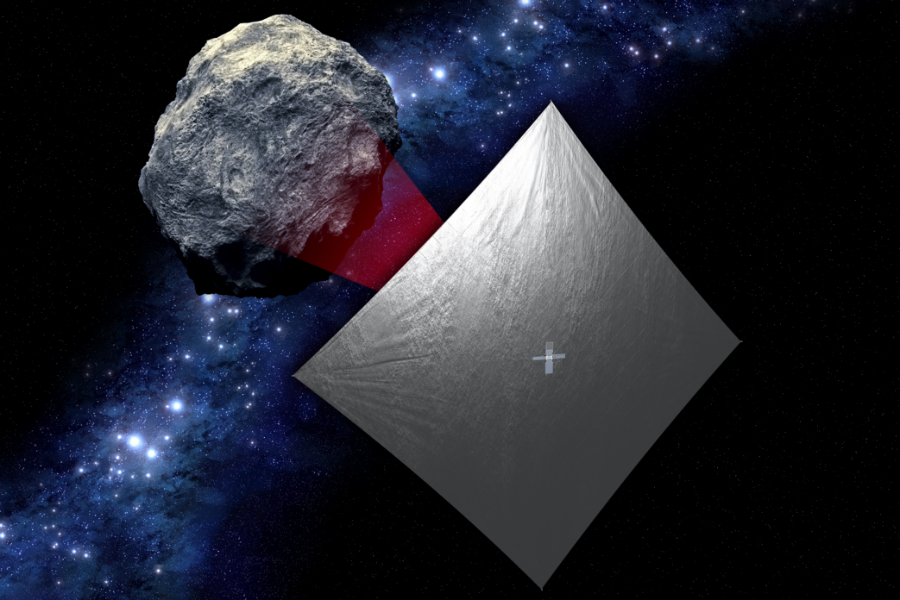Propelled by light, new NASA probe to set sail
Loading...
NASA is setting sail, the agency announced Tuesday.
In preparation to send astronauts to asteroids or the surface of Mars, the space agency is testing low-cost means of exploring the solar system to find what such environments may be like for future space explorers.
One such instrument is a small space probe that will be powered by a solar-powered sail. The Near-Earth Asteroid Scout, and its sail, is scheduled to lift off in 2018 onboard the Space Launch System (SLS). The SLS is the world's most powerful rocket, and is scheduled to start the Orion spacecraft's journey to Mars. In the meantime, it will send the small probe into space.
The $16 million probe is one of 13 science payloads, called cubesats, each about the size of a briefcase and weighing no more than 30 pounds, on the SLS's inaugural flight in 2018 that NASA announced Tuesday.
“A sail wins the race in terms of final velocity because it's the tortoise and the hare,” says Les Johnson, technical advisor for NASA’s Advanced Concepts Office at the Marshall Space Flight Center, in an interview with National Geographic. A chemical rocket provides enormous thrust at first, but eventually burns up its fuel. “Since the sail doesn't use any fuel, we can keep thrusting as long as the sun is shining.”
The 926-square-foot sail is about as long as a bus and as thick as a strand of human hair. It will be propelled by the pressure of photons of the sun's rays bouncing off of it, pushing the spacecraft forward and ultimately past the asteroid, while the probe captures images of its surface as it rotates.
It will take two and a half years for the NEA Scout to reach its destination, a smallish asteroid named 1991 VG. While journeying by sail may sound serene, this voyage will be anything but. Constant thrust, courtesy of sunlight hitting the solar sail, will accelerate the probe to 63,975 miles per hour relative to the sun, National Geographic reports.
The sail, plus solar panels, a processor, a camera, and other observing tools, will start out the mission folded into a volume the size of a shoebox and weighing no more than 30 lbs. Leslie McNutt, the project manager for NEA Scout, called packing the cubesat "the most complicated game of Tetris you've ever played."
Once in space, booms – each attached to a different corner of the sail – will extend, unpacking the solar sail.
Ms. McNutt believes solar sails like NEA Scout’s could be a "game changer" in the future of deep-space missions.
“In the past, [solar sails] have been relatively small,” she said. “Advances like NEA Scout’s sail could enable larger and larger spacecraft. The larger the spacecraft, the larger the solar sail will need to be. You have to work your way up – this is a step in the direction of bigger and better.”








